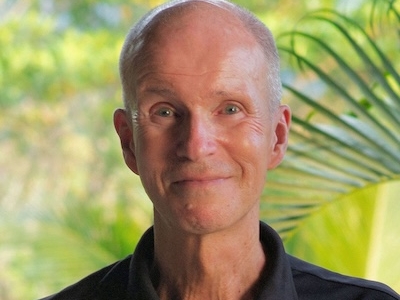
Dr. Paloma Raggo
Dr. Paloma Raggo is an assistant professor in Carleton University’s MPNL program and an Editor with PANL Perspectives. She researches leadership and nonprofit governance, global philanthropy, and research methods, and wrote a chapter, “Leadership in the Charitable Sector: A Canadian Approach?” in the book Intersections and Innovations. The interview, edited for length and clarity, is by Sherlyn Assam.
 Having worked in Canada and the US, have you seen a contrast between how power influences people in the nonprofit sector?
Having worked in Canada and the US, have you seen a contrast between how power influences people in the nonprofit sector?
Raggo: I don’t think, fundamentally, these dimensions of powers are different — these are concepts that apply across contexts. But I think the constraints on how this power is exercised are different. Ideologies and party politics in the US, compared to those in Canada, have much more of a bearing on the ways in which leaders of nonprofits will locate their work on an ideological scale. You know, poverty relief in the US gets much more politicized than something similar in Canada, where they’re not explicitly linked to individual politicians. That’s perhaps linked to the political systems that we have. Leaders that embody causes and need particular organizations, I’d posit, might be free from constraints in the Canadian context, compared to the American one.

Do you think power concentration and distribution in the sector will change if leadership contains more racialized people, more people who are of different genders, etc.?

The report “UNFUNDED: Black Communities Overlooked by Canadian Philanthropy” is the first to examine systematically the sector’s response to the challenges facing Black communities: www.forblackcommunities.org/#report.
Raggo: It goes back to the fundamental values that are in organizations. When we talk about diversity, gender and all these things, in leadership, is it in a demographic sense? Or do we value diversity in terms of opinion, in terms of process? It’s important to think fundamentally about all that, because we could reorganize whatever organizations we want, but if the decision-making processes, for example, don’t allow the real exerting of power, then there’s no real power change. Saying to someone that they’re in charge of something doesn’t necessarily give them power. Power is about the ability to shape decisions, shape outcomes, direct processes — exerting power on something.
It’s great that we’re increasing awareness of leadership in the sector. But putting someone who looks different at the top of these organizations doesn’t necessarily change anything. We have to look at various sources of leadership throughout an organization and rethink processes and ways in which decisions are made, so that new leaders don’t have to adapt to the same old system. I’m uncomfortable with the word ‘inclusion,’ because including someone in a system that’s deeply problematic doesn’t allow diverse leaders to exert power to change things — or to shape and mobilize people around new ideas. ‘Inclusion’ could actually socialize leaders into systems that are already there.
 Within leadership, I find it interesting that listening, empathy, healing, awareness and community building are usually associated with ‘feminine’ traits, yet women are underrepresented in leadership in the sector.
Within leadership, I find it interesting that listening, empathy, healing, awareness and community building are usually associated with ‘feminine’ traits, yet women are underrepresented in leadership in the sector.
Raggo: We have a sector that’s deeply gender divided. Cis woman make up the bulk of the workforce in the nonprofit sector, while most leaders are cis men. Why is that? Because we have a sector that’s deeply patriarchal, whether we like it or not. Statistically, it doesn’t make sense that there are so many men in leadership positions, given the prevalence of women in the sector.
When we talk about leadership, our instincts go to extraordinary stories of charismatic heroes. To compensate for hero worship in the nonprofit sector, we tend to say that our leaders are devoted — we tend to characterize ‘servant leadership’ as the main type of leadership. What does that tell you? It tells you stories of humility and passivity. Such traits aren’t necessarily bad. But they aren’t the traits that are instinctively valued in leadership. There’s an assumption that women working in the sector do it because they’re not interested in a ‘masculine’ type of leadership. But you know, by imposing ‘servant leadership’ ideas on men, we’re reinforcing these dynamics in women as well. I’m talking about cis women in general. But there are other issues, such as under-representation in BIPOC leadership and LGBTQ2+ leadership, that cause divisions and have to change.
Overall, it’s more a question of the systems in which we’re working, and it goes back to this idea of ‘inclusion.’ Asking us to have different outcomes in a system that we haven’t changed: why would we expect something different? It conceptually doesn’t make sense.
 How many people leave positions of leadership – how many racialized women leave organizations – because they felt like they weren’t being heard, or felt that there was representation but not actual institutional change?
How many people leave positions of leadership – how many racialized women leave organizations – because they felt like they weren’t being heard, or felt that there was representation but not actual institutional change?
Raggo: We don’t have good data on turnover. I get very frustrated by this. The problem of diversity is a pipeline problem: the pipes are leaking. It’s a retention problem – it’s not what’s coming in that’s the problem; it’s what’s coming out. People aren’t staying. And why aren’t they staying? It has nothing to do with them being Black or whatever identities they have. No, it’s this homogeneous thing. It’s this culture that asks that everyone be similar. And when your lived experience and different factors make you stand out, then you’re a grain of sand in the machine, which doesn’t run as smoothly as it’s ‘supposed to,’ because it’s based on an ‘average person,’ who happens to be the ‘average white person.’
Also, we have to be careful not to label individuals in diverse populations as troublemakers; we have to be careful not to characterize things as if we have to change everything for them. No, we have to change the system because it’s problematic. Unfortunately, we’re willing to train and socialize people to adapt and to include them in the system or culture, but we’re reluctant to ask those who are participants in that culture to change their own practices. And I find that problematic.
 What kind of leader do you find most common in the sector?
What kind of leader do you find most common in the sector?
Raggo: The best type of leader recognizes the context in which they’re leading – and can be a builder, or mentor, or storyteller, depending on the situation. That’s why I react when people say the nonprofit sector is all about ‘servant leadership.’ I’m sure in some circumstances, it could be that, but in others, it’s not.
Also, there are two important traits in a good leader. The first is to have insights about who you are – your strengths and weaknesses. The second is agility, adaptability. These are important skills – knowing who you are, and having insights into your situation, and understanding how to adapt and to inspire and move people towards a direction aligned with the goals of an organization. A leader thinks in terms of the team, not in terms of who will do what for them.
Does Canada need to draw different leaders to do better? We need to start developing a more analytical way of learning about leadership, and a less solution-oriented way. We have tons of leadership and management training, but little of this training forces you to think deeply about who you are and how you interact with the world, and these things are really important.
We should have more honest conversations and think of ways in which leaders can reach out to each other and create an atmosphere of trust and camaraderie, and not competition, so that leaders aren’t always competing for the resources on behalf of their organizations. It would be nice to see something like that flourish. That would be my hope for the Canadian sector.
Paloma Raggo is on Twitter and LinkedIn. Banner Photo is courtesy of Dimitar Donovski.
Tuesday, January 25, 2022 in For homepage, Leadership & Governance, News & Events
Share: Twitter, Facebook



